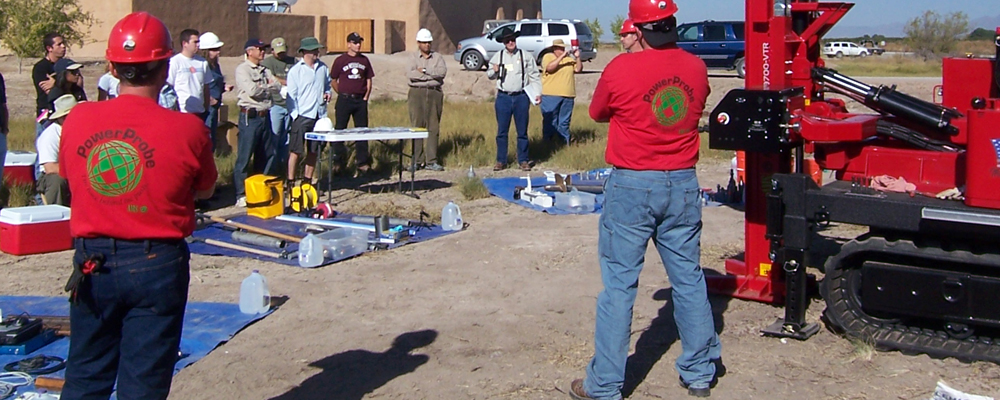| Price (With Option for Professional Certification, Includes Course Study and Certification Exam Fees): | $1695.00 To Register, Log in to Your E-School Account |
| Price (Without Option for Professional Certification): | $1495.00 To Register, Log in to Your E-School Account |
| Total CEUs for This E-Course: 15.0 CEUs Modules Included in This E-Course |
|
The key to the success of any ground-water monitoring program is the effective placement, drilling, design, construction and development of ground-water monitoring wells. Ground-water monitoring wells and monitoring well networks must be designed based on site-specific hydrogeologic and geochemical conditions, to monitor site-specific compounds of interest so that ground-water sampling teams will be able to collect representative samples for field and laboratory analysis. Using proper well design, construction and development techniques is also important from the standpoint of ensuring that monitoring wells will continue to produce representative ground-water samples for their planned lifespan, which may be 30 or more years.
This comprehensive 14-module E-Course covers everything from optimizing monitoring well placement and monitoring system design to environmental drilling to proper methods for design, construction and development of ground-water monitoring wells. In the first 9 modules of this E-Course, instructors focus on the elements that comprise an effective ground-water monitoring program; the importance of establishing monitoring program objectives, data needs and uses; factors that influence optimal monitoring well location and monitoring system design, including site-specific geology, hydrogeology and geochemistry; collecting existing information to create an initial conceptual site model; using modern site characterization methods and technologies to develop a detailed understanding of site geology, hydrogeology and geochemistry; refining the conceptual site model to optimize positioning of wells and well screens; environmental drilling methods available for characterizing sites and installing boreholes, wells and multi-level monitoring systems; and soil sample collection, description and handling.
The last 5 modules of this E-Course focus on practices used in monitoring well design, construction and development to ensure sediment-free samples, including establishing objectives of monitoring wells; sources of chemical interference in monitoring wells; selection of well casing and screen materials; optimizing well diameter; types and designs of well screens; the importance of selecting the proper well screen length to meet monitoring program and sampling objectives; options available for monitoring multiple zones or formations, including multi-level monitoring systems; selecting filter-pack materials and well-screen slot sizes (including use of pre-packed screens); selecting and installing annular seal materials and surface protection measures; designing and installing wells using direct-push technology; and selecting and using appropriate well-development methods.
The substance of more than a dozen ASTM Standard Guides and Practices for environmental site characterization, environmental drilling, monitoring well construction and well development is covered in this E-Course. In the field video portions of these modules, students learn how various advanced site characterization methods, including discrete and continuous soil sampling, discrete ground-water sampling, remote sensing methods (including soil electrical conductivity, soil hydraulic conductivity profiling and direct VOC detection), and cone penetration testing can be used along with other information to develop a detailed understanding of subsurface conditions. Additional video segments focus on how to collect soil samples and install small-diameter monitoring wells using direct-push methods and sonic drilling.
Total CEUs for This E-Course: 15 CEUs
Modules Included in This E-Course











